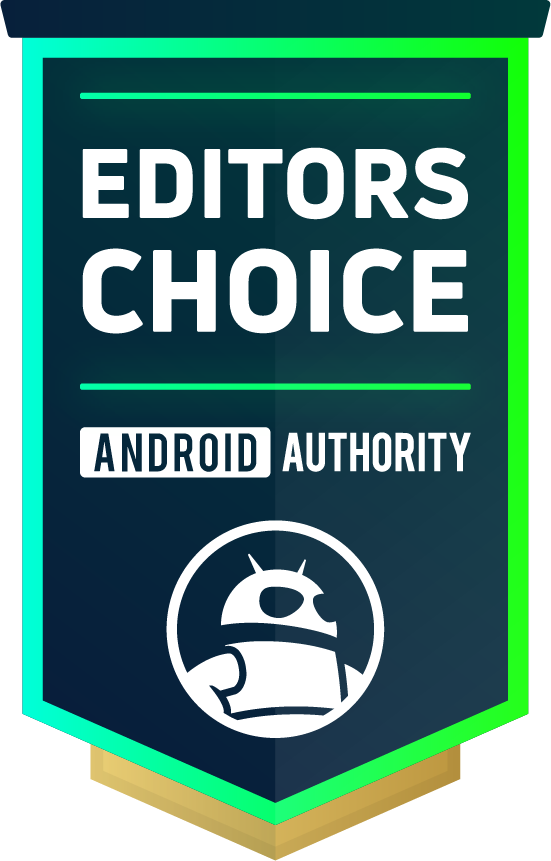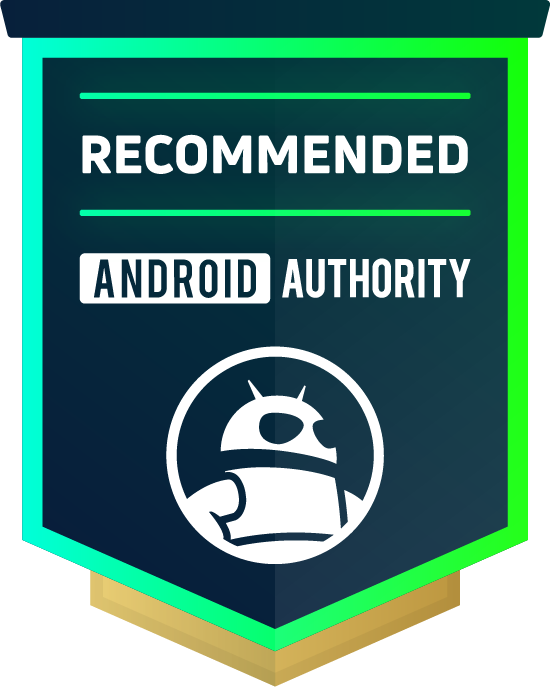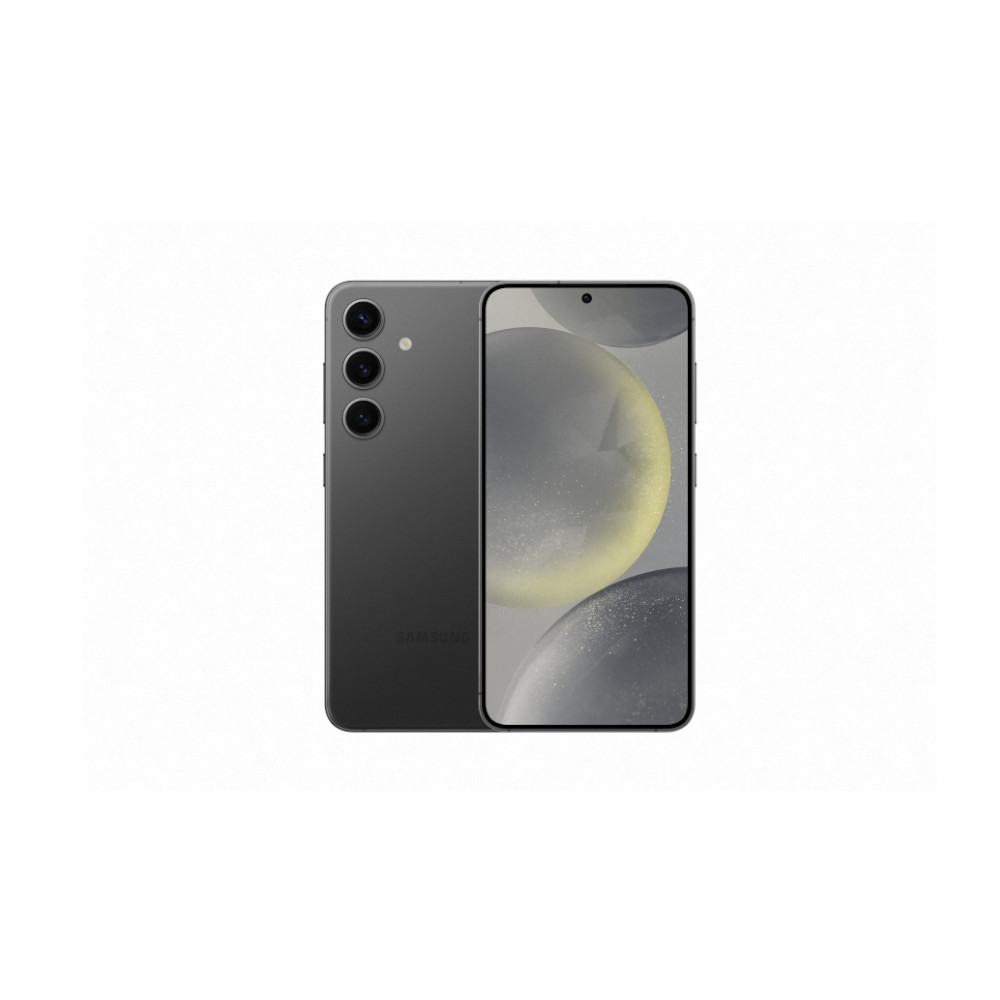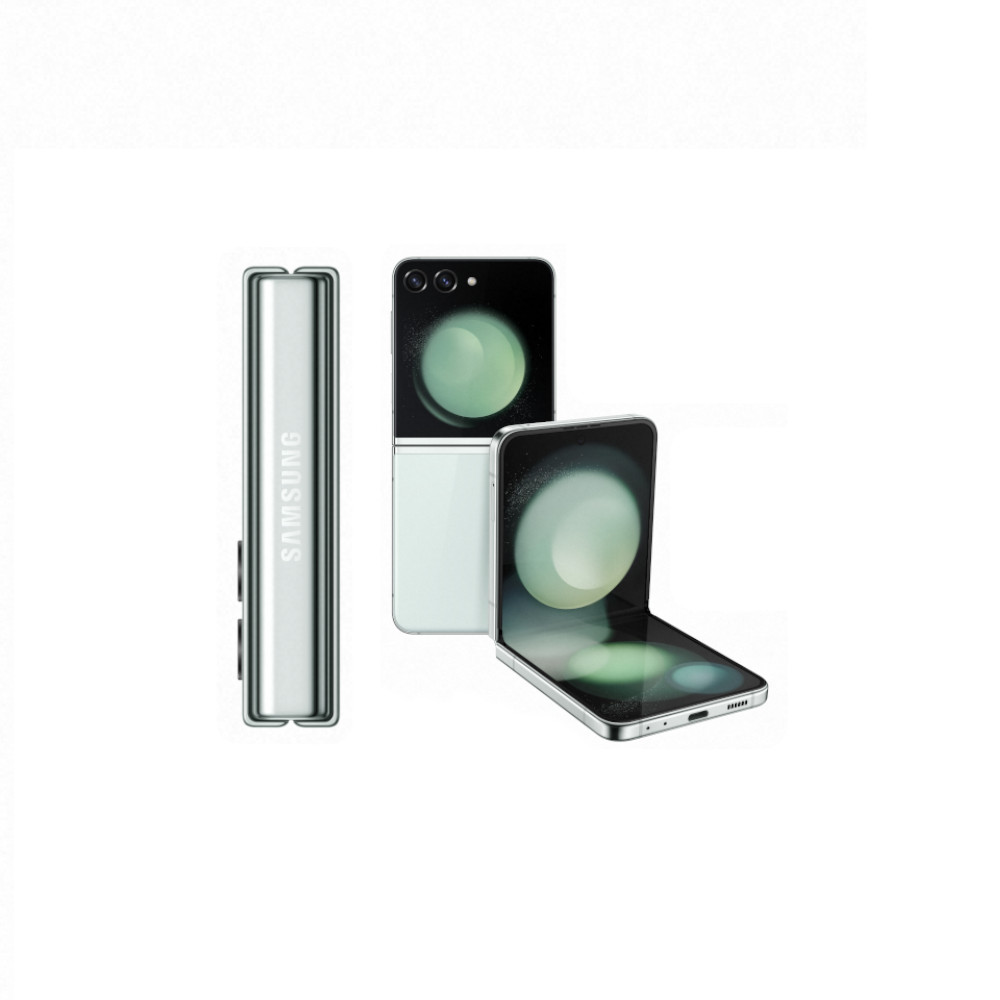Affiliate links on Android Authority may earn us a commission. Learn more.
The best small Android phones you can still buy in 2024









Small Android phones aren’t as common as they used to be, but there are still a few solid options on the market. There was a time when the best Android phones available were compact models. When choosing the best small phone for you, these are the main things to consider:
- How far can you stretch your budget?
- How important is camera performance?
- Have you considered folding devices?
- Do you need the latest version of Android?
With those questions in mind, we’ve tested and reviewed hundreds of Android phones, boiling the list down to the very best small Android phones you can still buy. Note that some of these devices are a bit older, as most manufacturers simply don’t make small phones anymore. For more about our guidelines, check out our buyer’s guide below.
Save time and find your best small Android phone!
The ASUS Zenfone 10 is the best small Android phone for most people


While most companies have moved on to 6.3-inch displays or larger, the ASUS Zenfone 10 bucks the trend by maintaining a slim and pocketable 5.9-inch Super AMOLED display. This makes it one of the smallest modern Android phones on the market, and we found a lot to like about it in our ASUS Zenfone 10 review.
The compact design is perfect for one-handed use, which is very refreshing in today’s market of behemoth smartphones. It fits perfectly into a pocket, and the robust build feels great in hand. It also comes in some great colorways, although the somewhat sporty design might not appeal to everyone.
On the inside, this phone is every bit as powerful as any other 2023 flagship, sporting a Qualcomm Snapdragon 8 Gen 2 processor and up to 16GB of RAM. In our testing, it flew through everything we tried with ease, although the smaller stature does mean that heat dissipation is worse than larger devices. If you’re looking to game, you’re better off with a larger device like ASUS’ own ROG Phone 8 series.
The ASUS Zenfone 10 is a pocket powerhouse in a class of its own.
Despite all that power, the battery still managed to make it through a full day of use in our review period, which isn’t always the case for small Android phones. This is mostly thanks to the 4,300mAh battery, which is quite large for a phone this size. It also supports charging speeds up to 30W while wired or 15W wireless, so it tops off quickly, too.
We’re also big fans of ASUS’ Zen UI, which is lightweight and offers a stock-like experience, but with some interesting new features. For example, the fingerprint scanner, located on the power button on the side of the device, offers fully mappable press and hold, double press, and swipe actions. It’s not as customizable as Samsung’s One UI, but it’s great if you like a more minimal experience with few pre-installed apps.
Although it’s not the best camera phone we’ve tried, the ASUS Zenfone 10’s two-lens array performed admirably. We do wish it had a telephoto lens as the software zoom really crushes some of the details at 4-8x. Still, white balance and color reproduction are solid, and the built-in gimbal provides extra smooth panning while recording video.
Ultimately, the Zenfone 10 is mostly in a class of its own. It feels like a throwback to the days when smartphones were much smaller, and it even has a headphone jack for extra nostalgia. The only potential downside is a limited update promise since ASUS only offers two years of version updates and four years of security updates. That’s significantly less than industry leaders like Samsung, but it likely won’t be a dealbreaker for anyone looking for a small Android phone that doesn’t hold anything back.
At this point the Zenfone 10 is over a year old, but its successor the Zenfone 11 Ultra is significantly larger, which so it’s not a great pick if you’re looking for a small phone.
What makes it stand out
- Size matters: This is one of the smallest flagship Android phones you can buy.
- The whole package: Great performance and solid cameras, unmatched at this size.
- Good battery life: Despite the size, the Zenfone 10 can easily last a day on a single charge.
The Google Pixel 5 is the best small Android phone from Google


The Google Pixel lineup has evolved over the years, but 2020’s Google Pixel 5 was the last truly small Android phone the company released. It also marked a key design change that has stuck with Google’s flagship devices ever since.
The Pixel 5’s 6-inch AMOLED feels great in hand, and it’s significantly lighter and smaller than its successors, the Pixel 6 (6.4-inches), Pixel 7 (6.32-inches), and Pixel 8 (6.2-inches). Overall we were very impressed with the quality of the FHD+ display, with fantastic colors that really pop. The aluminum and bio-resin (read: fancy plastic) backing material is noticeably less premium than more expensive devices, but we did find it to be very sturdy, even without a case.
Rather than focusing on raw power, the Pixel 5 uses a more efficient Snapdragon 765G processor, which is typically found in mid-range devices. In our testing, it was more than capable of powering through everyday apps and normal daily use. However, it didn’t compete with flagship processors at the time, and now it will feel underpowered compared to the Tensor processors found in newer Pixel phones.
What the Pixel 5 excels at is photography. Like all Pixel phones, Google has embued its logarithmic magic into the Pixel 5, turning an otherwise unmarkable set of camera sensors into an excellent camera phone. It features a 12MP main camera and a 16MP wide-angle camera, both of which we found to be excellent performers. Colors were warm and pleasing, and the addition of a wide-angle lens was great to see. However, this camera hardware was dated in 2020, and it’s borderline ancient by today’s standards. That said, for basic photos and video, it still gets the job done.
The bad news here is that the Google Pixel 5 isn’t as easy to get your hands on nowadays. It’s no longer sold by Google, so your best bet will be third-party retailers or buying second-hand. If you can deal with a slightly larger screen, the Pixel 8 ($699 at Amazon) offers a lot more phone with a slightly bigger footprint. Google’s seven-year update commitment for the Pixel 8 lineup also means it’s far more futureproof than the aging Pixel 5.
What makes it stand out
- Pixel magic: Google has infused Pixel phones with useful, but not overwhelming, unique features.
- Great cameras: The sensors are dated, but the Pixel 5 is still a great camera phone.
- Compact form factor: The Pixel 5 was the last truly small phone that Google made.
The Samsung Galaxy S24 is the best small phone from Samsung


The Samsung Galaxy S24 should need no introduction. Samsung Galaxy phones have always been among the best Android phones you can buy, and the brand is committed to keeping a small phone option at just 6.2 inches. It’s just a bit larger than the ASUS Zenfone 10 above, but it’s got all of the polish and aftermarket support that’s made Samsung the leader in the Android world for years.
Starting with the screen, the AMOLED was nothing short of excellent in our testing. Although you can find sharper displays on larger devices, the full HD+ resolution is more than enough for a display this size, and the color profile is fantastic out of the box. It’s a 120Hz variable display for speedy scrolling in compatible apps, but the dynamic refresh rate can go as low as 1Hz to preserve battery life. Also note that although the screen is slightly larger than the Galaxy S23, the overall size is the same due to reduced bezels.
Apart from that, the Galaxy S24 is a fantastic all-around smartphone. It comes with a powerful Qualcomm Snapdragon 8 Gen 3 for Galaxy or Samsung Exynos 2400 depending on where you live, and a sizeable 4,000mAh battery to keep it running throughout the day. Our only major complaint about the internals is the lack of storage space, which starts at just 128GB. We highly recommend swinging for the 256GB model, especially considering the missing microSD card slot.
Samsung’s flavor of Android is highly customizable and a joy to use, although there is more bloatware than you’ll find on devices from other OEMs. Still, that’s a small price to pay for fantastic aftermarket support, including seven years of OS and security updates.
Overall, the Samsung Galaxy S24 is a solid phone for just about anyone. It’s not the smallest Android phone you can buy, but it’s small enough to be convenient and comfortable to hold with one hand. That said, the boxy metal edges are a different feel if you’re not used to them. Apart from the other small Android phones listed above, the only real alternative at this size and price is the iPhone 15 ($829.99 at Amazon), which is a whole other bag of chips if you’re switching from Android.
What makes it stand out
- Great cameras: The Galaxy S24’s cameras are a step above other small phones in this price range.
- Gorgeous screen: The 6.2-inch AMOLED is a bit on the large side (for this list), but it features great color and sharpness.
- Fantastic support: With five years of security updates and four years of OS updates, this phone will last a long time.
The Sony Xperia 5 V is the best premium small Android phone

If you can afford to spend a bit more, the Sony Xperia 5 V is a fantastic little Android phone with some serious multimedia chops. It has a not-so-small 6.1-inch display, but it feels smaller in the hand thanks to the longer, 21:9 form factor. It packs a design similar to its predecessor, which we found was easy to hold and use with one hand.
You’re getting a 120Hz FHD+ OLED panel that remains plenty bright for use outdoors, but doesn’t quite excite us with its chunky bezels. It makes content on screen feel particularly cramped. We were a bit disappointed that Sony didn’t include a variable refresh rate display, which means you have to use 120Hz for everything and drain the battery or 60Hz for everything and deal with more sluggish scrolling. The phone defaults to the latter, but you’ll have to decide what’s more important for you.
Around that is premium casing through and through that sees a little redesign this time around. The cheap-feeling plastic of the previous generation has been replaced by a sturdy aluminum frame with stronger Gorilla Glass Victus 2 covering the front and back of the device. This gives it an exceptionally premium look and feel, although we did find that it does tend to attract fingerprints.
Building on that multimedia offering, there are a few other notable extra features packed in here, such as front-facing stereo speakers. These are a rarity on phones nowadays, and their inclusion means the Xperia 5 V sounds significantly better than the competition. If you prefer listening more discretely, the Xperia 5 V has another rarity for modern phones — a 3.5mm headphone jack.
Another welcome inclusion is a sizeable 5,00mAh battery — unchanged from its predecessor. You can easily make it through a day’s use when 60Hz mode is activated, even with demanding games and apps. Bear in mind that 120Hz will shave precious hours off that figure.
The Xperia 5 V’s camera hardware isn’t exactly groundbreaking, but we got excellent results. This one has great color accuracy, white balance, and natural details like all Sony cameras. The cameras don’t rely on oversharpening or oversaturation, and more serious photographers can tap into the Photo Pro app’s A/P/S/M options. Video results were also impressive, and the device can shoot 4K/120fps within the Photo Pro app.
Overall, the Xperia 5 V is an expensive small Android phone, but its feature set really makes it stand out from the crowd. We wish that Sony offered more than two Android upgrades and three years of security patches, but if you take good care of it, this device will last much longer.
What makes it stand out
- Compact size: It’s long and thin, but provides enough bulk to not feel cheap.
- Great cameras: The Xperia 5 V’s cameras provide great color accuracy and details, plus pro features for serious photographers.
- Headphone jack: Sony is one of the few manufacturers holding on to the headphone jack, and audiophiles benefit.
The Samsung Galaxy Z Flip 5 is a great alternative pick


Our last pick for the best small Android phones comes from a completely different category: Foldables. The Galaxy Z Flip 5 manages to keep a small footprint thanks to its folding design, and many of the drawbacks of earlier foldables are no longer an issue.
Folded, the Z Flip 5 is is a truly tiny Android phone, and it still has 6.7 inches of AMOLED real estate once opened. It’s tall and thin, like the Sony Xperia 5 V above, and we found it relatively easy to use one-handed. The screen itself is bright and speedy, although it does have a crease in the middle. However, your eyes get used to it quickly, and after a few hours, you’ll forget it’s there, trust us. On the front of the device, there’s a large Cover Screen that’s great for checking notifications or the time without opening the device, which is good news for battery life and removing distractions from your life.
The Snapdragon 8 Plus Gen 2 for Galaxy processor is a top performer, capable of powering through anything you can throw at it. Like all modern processors, it will heat up with extended use, especially on a smaller device like the Z Flip 5. The battery is noticeably smaller than standard phones at just 3,700mAh, which made it to the end of a single day in our testing. However, you can extend battery life by relying more on the smaller outer screen.
Camera performance is also great, but not quite as good as the mainline Galaxy S24 series. It keeps the same camera lenses as the year before, which we found to be capable shooters. The primary camera, in particular, is great for capturing details, and the ultrawide is nice for niche shots. Overall it’s great for a small Android phone, but it won’t take the top spot in any camera shootouts.
Apart from that, the Z Flip 5 has a few interesting software tricks that make the most out of its folding form factor. When half open, the phone enters “Flex Mode,” which effectively separates the top and bottom parts of the screen to perform two tasks. For example, YouTube may play videos at the top and display comments at the bottom. Our favorite trick is with the camera app, which uses the top of the screen as a viewfinder and puts the shutter button at the bottom. This turns the device into a kind of camcorder when held in hand, or a great group selfie camera when placed on a table. Even without Flex Mode, Samsung’s One UI is one of the most robust and fully-featured Android skins out there. Update support is also the best in the business, with Samsung offering four years of version updates and five years of security updates.
The Samsung Galaxy Z Flip 5 isn’t a small Android phone in the traditional sense, but in many ways, it’s even better. It certainly isn’t cheap, retailing at the same price as the Xperia 5 IV above, but the cool factor of having a foldable is more than worth the price of entry. If you’ve been eyeing foldables for a while, this is the one that we can finally recommend to just about anyone.
What makes it stand out
- It flips: The Z Flip 5 opens up into a large 6.7-inch screen, just like the clamshell flip phones of olden times.
- Great software: With a few special features, this phone takes full advantage of its unique form factor.
- Solid cameras: Both sensors on this camera perform well, with Samsung’s trademark post-processing.
What we look for in the best small Android phones
Size is obviously our main concern when selecting the best small Android phones, but there are several factors we consider. Here’s a quick breakdown:
- Size: For this list, we considered phones with screen sizes of 6.1 inches and below. This is larger than phones from the past, but unless you’re willing to use a phone from five years ago, this is, unfortunately, as small as it gets. It’s also worth noting that screen size is measured diagonally, so the exact dimensions for each phone will vary.
- Price and value: More expensive phones are not always better, and small Android phones are not always cheaper. In fact, many of the few small Android phones on the market are more expensive than budget alternatives, but still represent a good value for what you get.
- Performance: All of the small phones on our list have flagship power, although some are older-generation models. This isn’t necessarily a bad thing, as many newer flagship processors struggle with heat issues.
- Cameras: Small Android phones tend to have fewer lenses, but that doesn’t mean they aren’t capable shooters. All of our picks above take great pictures, but you will have to sacrifice a telephoto lens.
- Battery life: Size constraints mean smaller Android phones generally have smaller battery capacities, but all of the phones we’ve selected are capable of making it through a full day’s use.
- Build quality: Phones are only getting larger, so the more durable your phone is, the longer it will last. Premium materials like aluminum frames and Gorilla Glass Victus are what we look for.
- Software: Although all of these phones run Android, each manufacturer’s version of Android differs, as does the number of years each phone will receive updates and support.
Frequently asked questions
We can’t pinpoint an exact reason why smaller smartphones are so rare these days, but we can say it’s an industry trend that’s been developing for years. The market has slowly moved to larger screens, which naturally translates to bigger devices.
They are rare, but some high-end devices do come in smaller iterations. These include models like the Xperia 5 IV, ASUS Zenfone 10, Samsung Galaxy S24, and others. Again, they are rare, though.
Although it’s counterintuitive, cheap Android phones tend to be on the larger side. In fact, most of the small Android phones on our list are premium devices with price tags to match.